Abstract
A polychlorobiphenyl (PCB)-dechlorinating inoculum eluted from upper Hudson River sediments was treated with either heat or ethanol or both. The treated cultures retained the ability to dechlorinate PCBs (Aroclor 1242) under strictly anaerobic conditions. The dechlorination activity was maintained in serial cultures inoculated with transfers of 1% inoculum when the transferred inoculum was treated each time in the same manner. No methane production was detected in any treated culture, although dechlorination of PCBs in the untreated cultures was always accompanied by methane production. All treated cultures preferentially removed meta chlorines, yielding a dechlorination pattern characterized by accumulation of certain ortho- and para-subsituted congeners such as 2-4-chlorobiphenyl (2-4-CB), 2,4-2-CB, and 2,4-4-CB. In contrast, the untreated cultures showed more extensive dechlorination activities, which almost completely removed both meta and para chlorines from Aroclor 1242. These results suggest that microorganisms responsible for the dechlorination of PCBs in the upper Hudson River sediments can be grouped into two populations according to their responses to the heat and ethanol treatments. Microorganisms surviving the heat and ethanol treatments preferentially remove meta chlorines, while microorganisms lost from the enrichment mainly contribute to the para dechlorination activity. These results indicate that anaerobic sporeformers are at least one of the physiological groups responsible for the reductive dechlorination of PCBs. The selection of a dechlorinating population by such treatments may be an important step in isolation of PCB-dechlorinating microorganisms.
Full text
PDF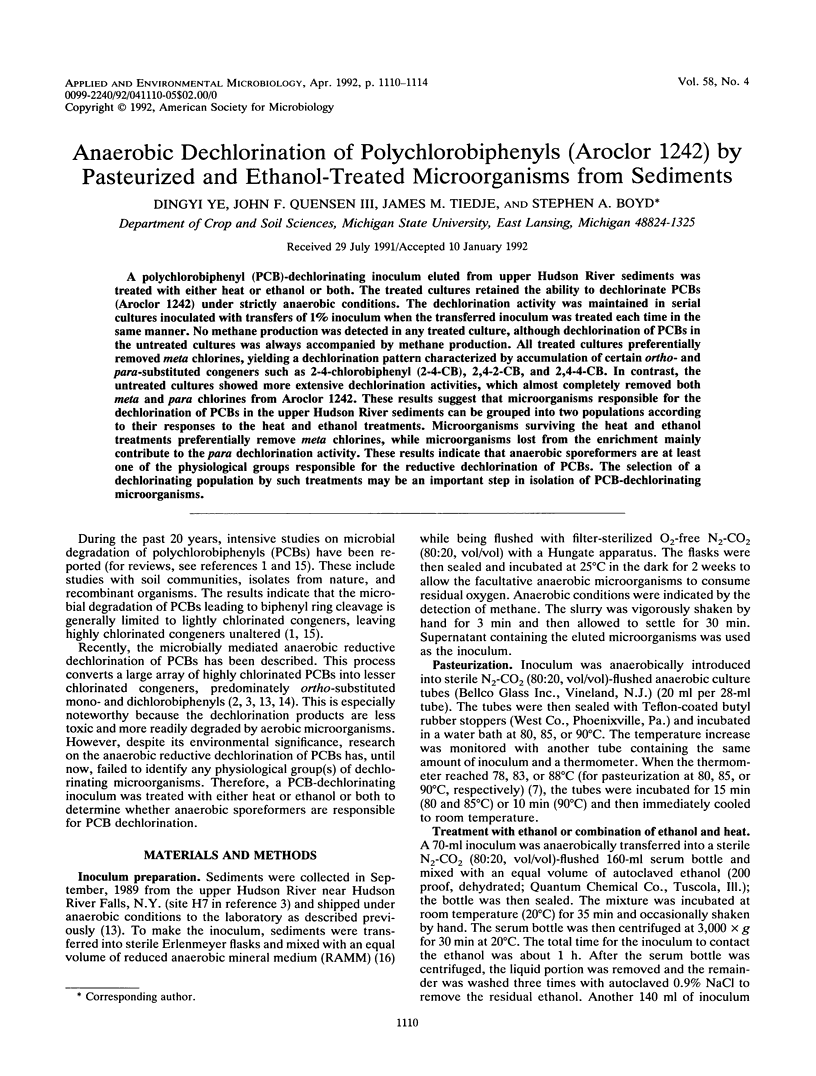
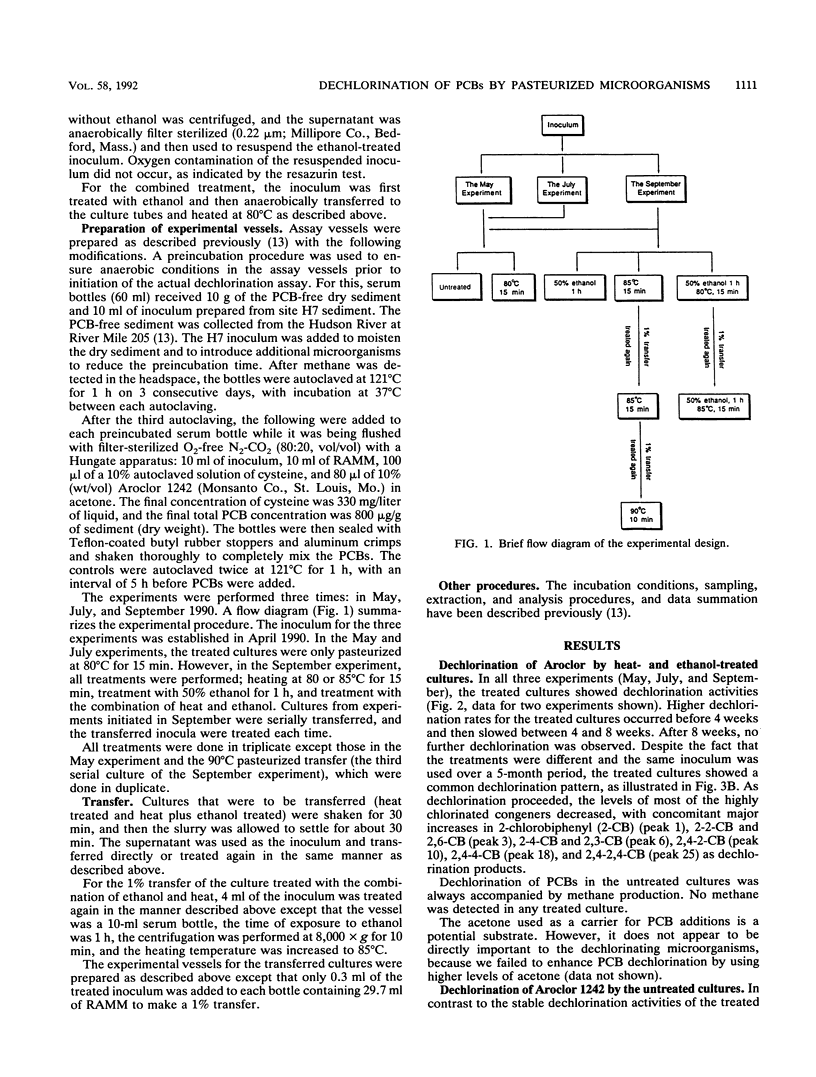
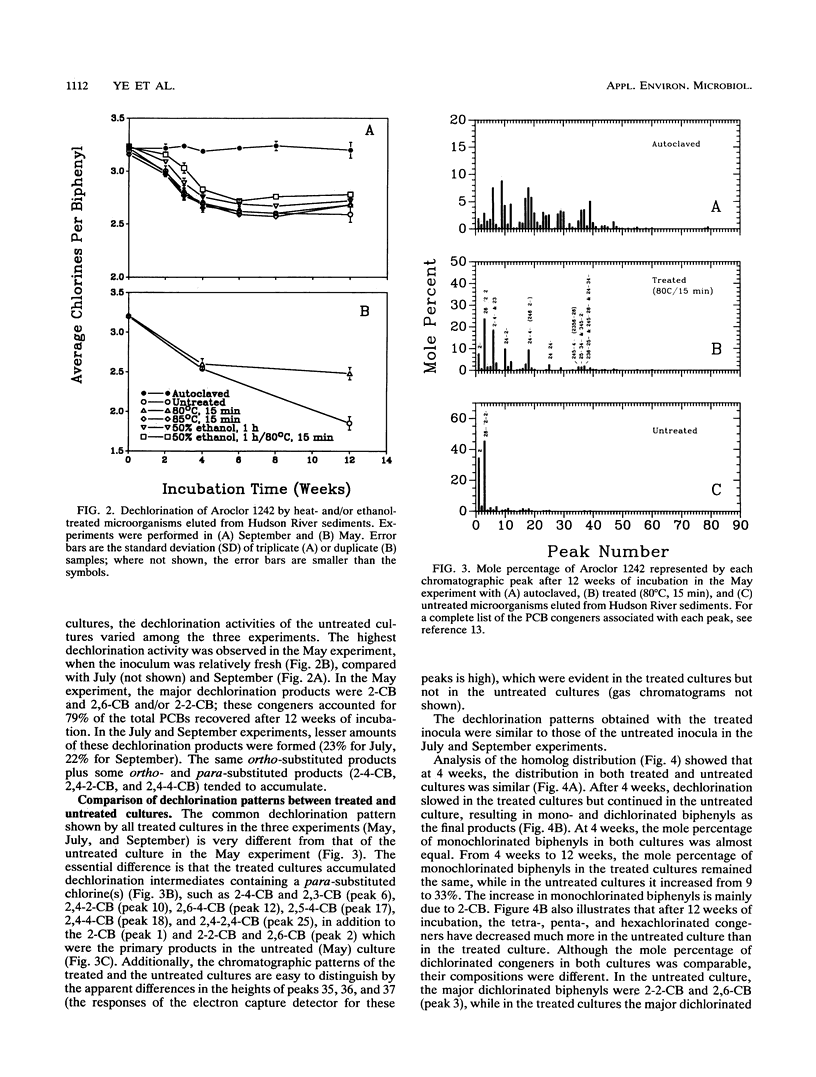
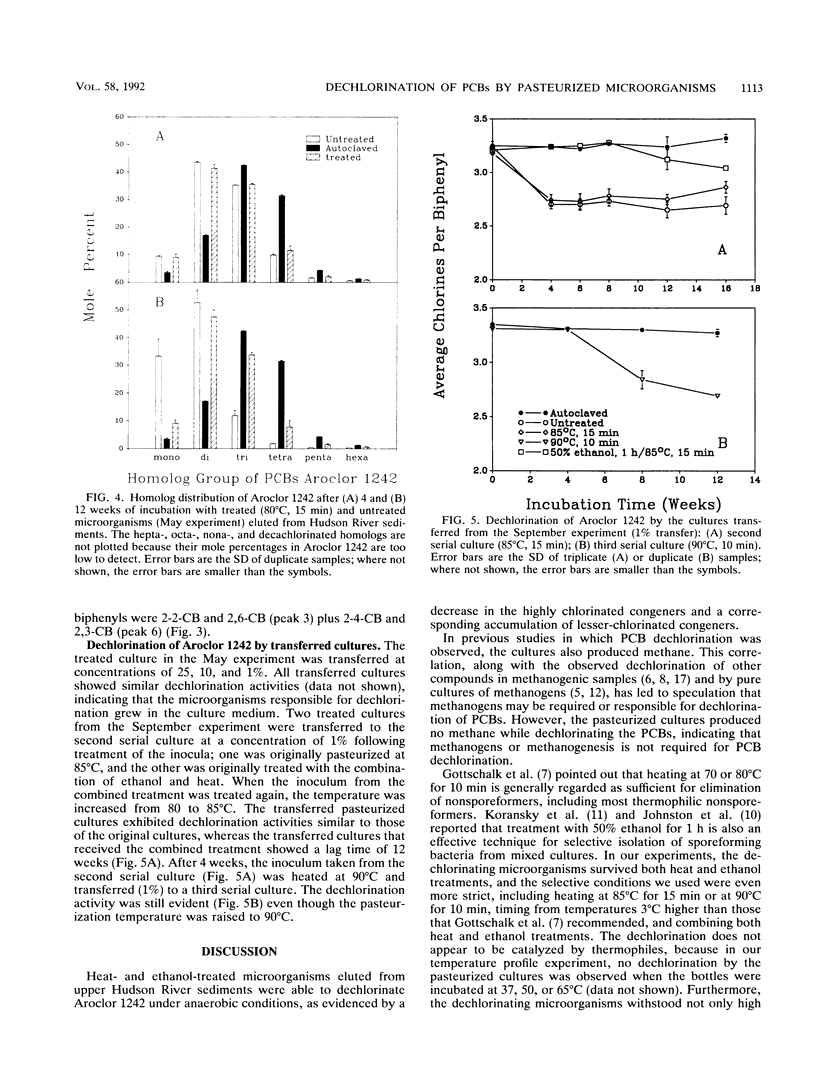
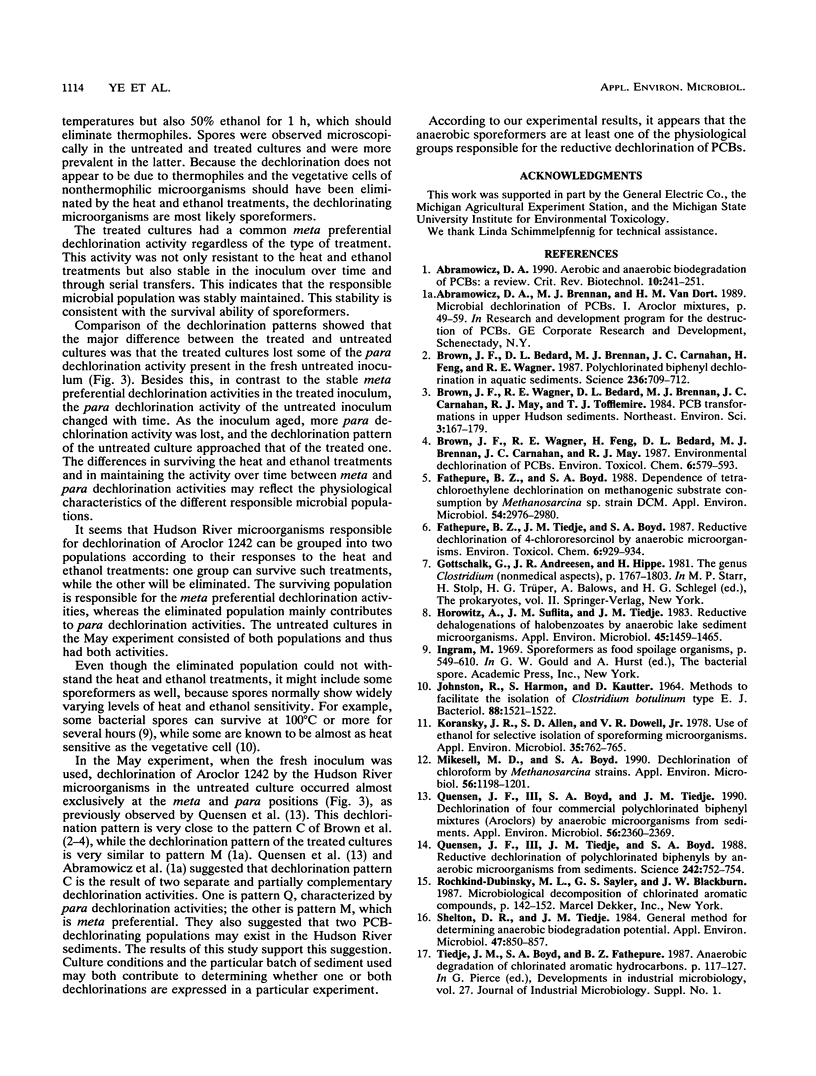
Selected References
These references are in PubMed. This may not be the complete list of references from this article.
- Brown J. F., Jr, Bedard D. L., Brennan M. J., Carnahan J. C., Feng H., Wagner R. E. Polychlorinated biphenyl dechlorination in aquatic sediments. Science. 1987 May 8;236(4802):709–712. doi: 10.1126/science.236.4802.709. [DOI] [PubMed] [Google Scholar]
- Fathepure B. Z., Boyd S. A. Dependence of tetrachloroethylene dechlorination on methanogenic substrate consumption by Methanosarcina sp. strain DCM. Appl Environ Microbiol. 1988 Dec;54(12):2976–2980. doi: 10.1128/aem.54.12.2976-2980.1988. [DOI] [PMC free article] [PubMed] [Google Scholar]
- Horowitz A., Suflita J. M., Tiedje J. M. Reductive dehalogenations of halobenzoates by anaerobic lake sediment microorganisms. Appl Environ Microbiol. 1983 May;45(5):1459–1465. doi: 10.1128/aem.45.5.1459-1465.1983. [DOI] [PMC free article] [PubMed] [Google Scholar]
- JOHNSTON R., HARMON S., KAUTTER D. METHOD TO FACILITATE THE ISOLATION OF CLOSTRIDIUM BOTULINUM TYPE E. J Bacteriol. 1964 Nov;88:1521–1522. doi: 10.1128/jb.88.5.1521-1522.1964. [DOI] [PMC free article] [PubMed] [Google Scholar]
- Koransky J. R., Allen S. D., Dowell V. R., Jr Use of ethanol for selective isolation of sporeforming microorganisms. Appl Environ Microbiol. 1978 Apr;35(4):762–765. doi: 10.1128/aem.35.4.762-765.1978. [DOI] [PMC free article] [PubMed] [Google Scholar]
- Mikesell M. D., Boyd S. A. Dechlorination of chloroform by methanosarcina strains. Appl Environ Microbiol. 1990 Apr;56(4):1198–1201. doi: 10.1128/aem.56.4.1198-1201.1990. [DOI] [PMC free article] [PubMed] [Google Scholar]
- Quensen J. F., 3rd, Tiedje J. M., Boyd S. A. Reductive dechlorination of polychlorinated biphenyls by anaerobic microorganisms from sediments. Science. 1988 Nov 4;242(4879):752–754. doi: 10.1126/science.242.4879.752. [DOI] [PubMed] [Google Scholar]
- Quensen John F., Boyd Stephen A., Tiedje James M. Dechlorination of Four Commercial Polychlorinated Biphenyl Mixtures (Aroclors) by Anaerobic Microorganisms from Sediments. Appl Environ Microbiol. 1990 Aug;56(8):2360–2369. doi: 10.1128/aem.56.8.2360-2369.1990. [DOI] [PMC free article] [PubMed] [Google Scholar]
- Shelton D. R., Tiedje J. M. General method for determining anaerobic biodegradation potential. Appl Environ Microbiol. 1984 Apr;47(4):850–857. doi: 10.1128/aem.47.4.850-857.1984. [DOI] [PMC free article] [PubMed] [Google Scholar]


